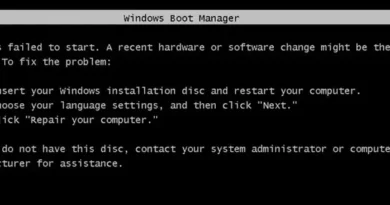How to fix DNS errors on Windows 10
Internet connection requires DNS to work smoothly. Unfortunately, DNS problems on Windows 10 are widespread. Below we will discuss several ways to fix them.
Command line
Press the “Windows + X” buttons and go to the command line (administrator).
Enter the following commands in sequence:
- ipconfig / flushdns;
- ipconfig / registerdns;
- ipconfig / release;
- ipconfig / renew;
- NETSH winsock reset catalog;
- NETSH int ipv4 reset reset.log;
- NETSH int ipv6 reset reset.log;
- Exit.
Check if the problem is resolved.
Disable peer-to-peer download of updates
OS updates are very important for the smooth functioning of your computer, but sometimes system updates can lead to DNS errors. Disabling peer-to-peer download is one way to solve this kind of problem. To do this, open “Settings” and go to “Update & Security”. Select “Advanced Settings”, then click on “How updates are delivered”. Select “PCs on my local network” and disable Updates from more than one place.
Changing energy settings
Some users reported that the error is resolved by changing the power consumption settings of the wireless adapter. Press “Windows + S” and type “Power options” in the search bar, then select the appropriate icon from the menu that opens. Click on the current mode, then on “Change parameters”. Next, go to “Advanced Settings”. Set the highest priority for your wireless adapter, click Apply and OK.
Reinstalling the network adapter driver
Find the network adapter in the “Device Manager”, right-click on it and select “Uninstall”. After the uninstallation is complete, find the same device again and click on “Update Driver”. Select the option to automatically search for and install the software.
Make sure the Microsoft LLDP driver is enabled
To do this, press Windows + X and select Network Connections. In the window that opens, select your connection and right-click on it, then go to “Properties”. Make sure that there is a check mark next to the Microsoft LLDP protocol driver in the list (if not, check it).
Clean boot
Some users claim that they fixed DNS issues by doing a clean boot. According to them, certain third-party services interfered with DNS, and after finding them and disabling them, the error was resolved. To perform a clean boot, do the following:
- Press Windows + R and type msconfig.
- When the “System Settings” window opens, go to the “Services” tab.
- Select “Hide all Microsoft services” and click on “Disable all”.
- Click Apply and OK.
After restarting your computer, only Microsoft services will run. If the error does not recur, then its cause is in one of those services that you previously disabled.
Change router settings
It is believed that Windows 10 has problems with 2.4GHz networks. Therefore, if your router supports a 5 GHz network, make sure it is using it. How to properly reconfigure the device should be written in the instructions for it.
Use google DNS server
If the problem is with your ISP’s DNS server, try using Google’s public server. Go to “Network Connections”, right-click on your connection and select “Properties”. Enter the preferred and alternate DNS server addresses 8.8.8.8 and 8.8.4.4 respectively (208.67.222.222 and 208.67.222.220 are also sometimes used).
Change the MAC address of the adapter
Open a command prompt as administrator and enter “ipconfig / all”. Go to “Physical Address”, there you will see your MAC address. Then open “Network Connections” and in them the properties of the adapter. Go to “Configure”, then to the “Advanced” tab. Highlight the “Network address”, here you need to copy the previously found MAC address. After all the manipulations, restart your computer.
Remove Winsock Keys from Registry
Press Windows + R, type regedit. Go to HKEY_LOCAL_MACHINE> SYSTEM> CurrentControlSet> Services. In the list, select the keys Winsock and Winsock2, select “Export”. Save them as winsock and winsock2. After exporting the keys, delete the sources. Restart your computer and restart Registry Editor. Select File> Import. Import winsock and winsock2 one by one, then restart your PC again.
